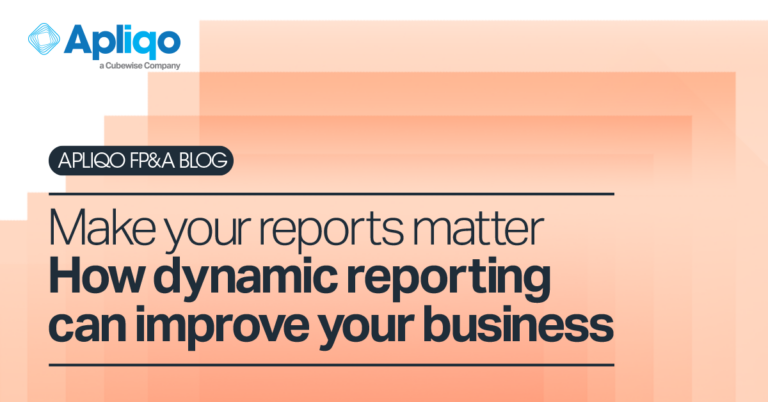Data is King – you’ve probably heard (and likely repeated) this catchphrase more often than you can count. And it’s true; without good data, the decisions that make or break your business are based on guesswork.
However, in an attempt to gather as many company insights as possible, we see businesses left drowning in data yet starving for information. That’s because data is dead, and only becomes useful when it’s made understandable and actionable.
So, how can your company avoid drowning in a sea of data and learn to turn the static numbers in your Excel spreadsheets into actionable insights that propel your business to the next level?
In this article we’ll take a look at dynamic reporting, a subset of Data Visualization that can breathe life into your reports, free up resources, and offer an intuitive way to interact with/analyze company data and fuel strategic decision-making.
Data evolution and the current state of reporting
Take this statement:
Company Investment A has produced a 3% return over the past 12 months.
Pretty impractical, right?
Now compare it with this:
Company Investment A has produced a 3% return over the past 12 months. The overall benchmark return for investments is 2.3%, and the best return across the company’s entire asset portfolio is 3.2%
What this simple example shows is that crude data is completely useless. Without interpretation and analysis, data is nothing more than an unorganized, intangible mess of facts and figures that provides zero insight into a company, its performance, or the opportunities/challenges it faces. Nonetheless, most companies find that their finance organizations spend the majority of their time chasing data.
In a recent AFP/APQC survey, 430 global FP&A professionals reported that they spend 42% of their time gathering data, 33% administering manual processes, and only 25% performing high-value analysis.
At a time when businesses are relying more than ever on finance to help guide the company ship, CFOs and their teams are still stuck gathering, prepping, and cleansing data, rather than focusing their skills on producing value-added analysis to drive strategic decision-making.
Dynamic reporting, however, can help transform meaningless company data into real business insights, while simultaneously freeing up your team’s resources so it can focus its attention where it is most needed.
How dynamic reporting can drive better decision making
Dynamic reports differ from traditional static reports in 2 big ways:
- Whereas static reports focus on trends from a single, predetermined point in time (hence why they’re called static), dynamic reports offer real-time insights into the most up-to-date company data.
- Dynamic reports should feature interactive capabilities that allow you to drill deeper into their insights and conduct alternate or more profound analysis.
Whereas static reports offer a fragmented and frozen view of past trends, dynamic reporting consolidates cross-company data in one place, providing you with a more cohesive view of your entire organization.
Dynamic reports can also be accessed from a single application, removing the need to export and share data in HTML or PDF formats. Not only does this reduce the amount of time your team spends on manual reporting, but it also creates a portal for collaboration between FP&A and the rest of your company. Dynamic reporting tools also come loaded with visualization features that make interacting, interpreting, and analyzing company data more intuitive than ever.
Most importantly, dynamic reporting harnesses your team’s most valuable asset, its skills for strategic analysis, and allow to focus your energy on producing the types of analysis your executives so desperately need to help guide their decision-making.
Dynamic reporting – A stepping stone to business partnering
Dynamic reports transform unorganized, meaningless static data into constantly-updated, digestible reports accompanied with striking visuals. They promote collaboration between finance and the rest of your organization and, most importantly, take your finance team that step closer to being the business partner your company needs it to be.
All Apliqo reports are dynamic by design and loaded with features to help you extract key insights and guide company strategy faster than ever before. Click here to your free demo and see how Apliqo FPM can work for your organisation.







